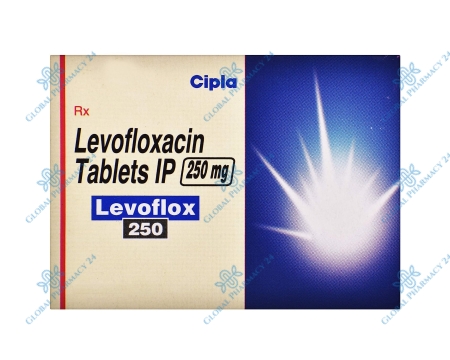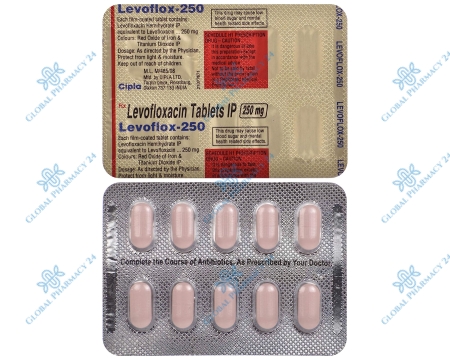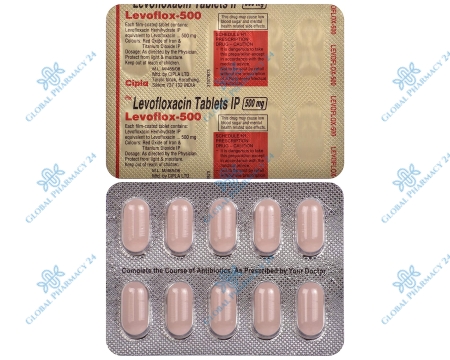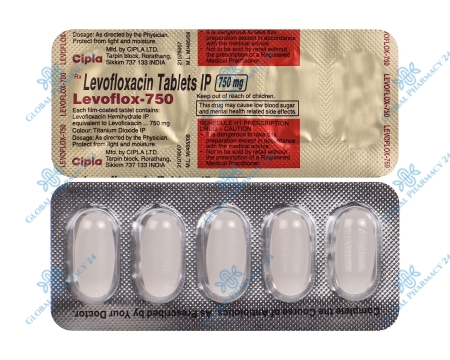| Characteristic | Detail |
|---|---|
| Generic Name | Levofloxacin |
| Brand Names | Levaquin, others |
| Drug Class | Fluoroquinolone Antibiotic |
| Indications | Bacterial Infections |
| Formulation | Tablet, Oral Solution, Injection |
| Dosage | 250 mg, 500 mg, 750 mg |
| Administration | Oral, IV |
| Duration of Treatment | Depends on infection type |
| Side Effects | Nausea, Headache, Dizziness, Diarrhea |
Getting Acquainted with Levofloxacin
Levofloxacin, a critical player in the fluoroquinolone antibiotic class, stands out for its broad-spectrum antibacterial efficacy. Designed to combat a wide range of infections, this medication targets both gram-positive and gram-negative bacteria, making it a versatile choice in the treatment of bacterial infections. The drug's mechanism involves inhibiting DNA gyrase and topoisomerase IV, enzymes crucial for bacterial DNA replication, transcription, repair, and recombination, thereby arresting bacterial growth and proliferation.
The development and approval of Levofloxacin marked a significant advancement in antimicrobial therapy. It offers a potent solution for treating various infections, including respiratory tract infections, urinary tract infections, skin infections, and more. Its effectiveness, coupled with the convenience of oral and intravenous formulations, has made it a preferred option for healthcare providers and patients alike, highlighting its importance in modern antibiotic therapy.
A Look at Levofloxacin’s Key Features
Levofloxacin boasts a unique profile that combines broad-spectrum antibacterial activity with a favorable pharmacokinetic profile, allowing for once-daily dosing in most indications. This ease of use, combined with its high bioavailability and extensive tissue penetration, ensures effective delivery to the site of infection, maximizing therapeutic outcomes.
How Levofloxacin Works Against Bacteria
By targeting and inhibiting the essential bacterial enzymes DNA gyrase and topoisomerase IV, Levofloxacin interferes with bacterial DNA processes, leading to the eradication of the infectious bacteria. This mode of action is selective for bacteria, thereby minimizing the impact on human cells and reducing the potential for side effects.
Profiling the Manufacturer of Levofloxacin
Levofloxacin is manufactured by a number of pharmaceutical companies worldwide, with each adhering to stringent quality control standards to ensure the drug's efficacy and safety. These manufacturers are committed to providing a reliable supply of Levofloxacin to meet the global demand for effective antibacterial treatments.
Levofloxacin's Journey from Development to Market
The development of Levofloxacin was driven by the need for antibiotics with improved spectra of activity, better patient compliance, and fewer side effects. Its journey from laboratory synthesis to market approval underscores the pharmaceutical industry's commitment to advancing healthcare and combating bacterial infections.
Evaluating Levofloxacin's Effectiveness
Levofloxacin's effectiveness is supported by extensive clinical research demonstrating its ability to treat a wide range of bacterial infections. Its broad-spectrum activity ensures that it remains a critical option for empiric therapy, especially in settings where the causative pathogens may be unknown. The drug's efficacy is further enhanced by its pharmacokinetic properties, which ensure optimal concentrations at the site of infection for prolonged periods, thereby improving treatment outcomes.
In the battle against bacterial infections, Levofloxacin's role cannot be overstated. Its ability to rapidly target and kill bacteria makes it an invaluable tool in the clinician's arsenal, especially in an era where antibiotic resistance is a growing concern. By maintaining high standards of efficacy and safety, Levofloxacin continues to be a cornerstone in the management of bacterial infections, offering hope and healing to countless patients worldwide.
Different Conditions Levofloxacin Can Treat
Levofloxacin is effective against a variety of conditions, including acute bacterial sinusitis, acute bacterial exacerbation of chronic bronchitis, community-acquired pneumonia, skin and skin structure infections, chronic bacterial prostatitis, urinary tract infections, and inhalational anthrax (post-exposure). Its versatility makes it a valuable resource in infectious disease management.
Understanding the Potency of Levofloxacin
The potency of Levofloxacin is a testament to its ability to achieve high concentrations in tissues, surpassing those in the bloodstream, which is crucial for treating infections located in hard-to-reach areas. This pharmacological advantage underscores its effectiveness across a spectrum of bacterial pathogens.
Anticipating Results: Timeline for Levofloxacin’s Effect
The onset of Levofloxacin's action can be observed within hours of administration, with clinical improvement often seen within the first 48 to 72 hours. However, the duration of treatment varies depending on the type and severity of the infection, emphasizing the importance of following the prescribed course to ensure complete eradication of the pathogen.
Ideal Candidates for Levofloxacin Treatment
Ideal candidates for Levofloxacin treatment are individuals with confirmed or suspected bacterial infections where the pathogen is known to be susceptible. Its broad-spectrum efficacy makes it suitable for use in a wide range of patient populations, though considerations for age, renal function, and potential drug interactions are essential for optimizing safety and efficacy.
Taking Levofloxacin: Dosage and Administration Guide
Levofloxacin's dosage and administration guidelines are tailored to the specific infection being treated, reflecting the drug's flexibility and the need for personalized treatment plans. For most adults, the dosing ranges from 250 mg to 750 mg once daily, depending on the severity and type of infection. The availability of various formulations enables administration flexibility, accommodating patient needs and preferences, and ensuring effective treatment outcomes.
Proper Levofloxacin Dosage: A Comprehensive Guide
The appropriate dosage of Levofloxacin varies based on the infection's nature and severity. Dosage adjustments may be necessary for patients with renal impairment to avoid accumulation and potential toxicity. This personalized approach ensures that each patient receives the optimal therapeutic dose for their condition.
Dosage Recommendations Based on Different Conditions
Dosage recommendations for Levofloxacin are condition-specific, with lower doses typically used for less severe infections and higher doses for more serious conditions. For example, 500 mg might be recommended for urinary tract infections, while 750 mg may be prescribed for more severe cases of pneumonia, demonstrating the drug's adaptability to varying medical needs.
Administering Levofloxacin: Dos and Don’ts
When administering Levofloxacin, it is important to take it at the same time each day to maintain consistent blood levels. The medication can be taken with or without food, but it should not be taken with dairy products or mineral supplements within two hours of dosing, as these can interfere with absorption.
Situations that Require Special Precautions
Certain conditions require special precautions when taking Levofloxacin, including a history of tendon problems, heart conditions, or kidney disease. Patients should inform their healthcare provider of all medical history and current medications to avoid adverse interactions and side effects.
Contraindicated Drugs: A Comprehensive List
Levofloxacin can interact with several other medications, leading to increased risk of side effects or decreased effectiveness. Drugs that are contraindicated include certain antiarrhythmics, antipsychotics, and NSAIDs, among others. A comprehensive review of a patient's medication regimen is essential before starting Levofloxacin.
Navigating Side Effects and Precautions with Levofloxacin
While Levofloxacin is a powerful antibiotic, it is not without potential side effects. Common adverse reactions include gastrointestinal upset, headache, and dizziness, which are generally mild and transient. However, awareness and prompt reporting of side effects can significantly enhance patient care and safety, ensuring that any adverse reactions are managed effectively.
Levofloxacin carries a risk of more severe side effects, including tendon damage, QT prolongation, and hypersensitivity reactions. These risks underscore the importance of careful patient selection and monitoring during treatment. Healthcare providers must balance the benefits of Levofloxacin against its potential risks, tailoring therapy to the individual patient's needs and health profile.
Expected Side Effects of Levofloxacin
Common side effects associated with Levofloxacin include nausea, diarrhea, headache, and dizziness. While these are generally mild, patients should be advised to contact their healthcare provider if side effects persist or worsen, to ensure proper management and care.
Less Common but Severe Side Effects
Less common but more severe side effects of Levofloxacin can include tendon rupture, QT prolongation, serious allergic reactions, and liver toxicity. These side effects are rare but require immediate medical attention should they occur, highlighting the need for ongoing vigilance during treatment.
Steps to Take if Side Effects Worsen
If a patient experiences worsening side effects or new symptoms while taking Levofloxacin, it is crucial to seek medical advice promptly. Adjusting the dosage or discontinuing the medication may be necessary to safeguard the patient's health and well-being.
The Pros and Cons of Levofloxacin Use
- Pros:
- Broad-spectrum antibacterial activity
- Convenient dosing regimen
- High bioavailability and tissue penetration
- Effective against a wide range of infections
- Cons:
- Potential for serious side effects, including tendon damage and QT prolongation
- May interact with other medications
- Not suitable for all patients, including those with certain pre-existing conditions
In conclusion, Levofloxacin is a highly effective antibiotic with a broad range of applications in the treatment of bacterial infections. Its benefits must be weighed against the potential risks, with careful consideration given to patient history and current health status. By adhering to dosage guidelines, monitoring for side effects, and taking necessary precautions, Levofloxacin can be a valuable tool in the fight against bacterial infections.
FAQs Levoflox
1. What is Levoflox used for?
Levoflox is an antibiotic medication used to treat various bacterial infections such as pneumonia, skin infections, urinary tract infections, and sinusitis.
2. How should I take Levoflox?
Levoflox should be taken exactly as prescribed by your doctor. It is typically taken orally with a full glass of water, with or without food. Do not crush, chew, or break the tablet, swallow it whole.
3. What are the possible side effects of Levoflox?
The common side effects of Levoflox include nausea, diarrhea, headache, dizziness, and trouble sleeping. Serious side effects such as tendon rupture, nerve damage, and allergic reactions are rare but can occur. Consult your doctor if you experience any unusual symptoms.
4. Can Levoflox be used to treat viral infections?
No, Levoflox is an antibiotic medication effective against bacterial infections only. It will not work for viral infections such as the common cold or flu.
5. Are there any precautions I should take while using Levoflox?
It is important to inform your doctor about any medical conditions you have, especially if you have a history of tendon problems, seizures, or liver disease. Avoid prolonged exposure to sunlight or tanning beds while taking Levoflox, as it may increase the risk of sunburn.



























